In this guide, we’ll explore the 18 best platforms to sell art online in 2025. From big names like Etsy and Society6 to niche art-selling websites like Saatchi Art, and even self-hosted options like WooCommerce and Ecwid, you’ll discover the best way to sell artwork online depending on your goals.
We’ll also look at where to sell art for free (no hosting fees!), how to sell prints online, and which apps pay artists the most.

Selling art online has never been more exciting than it is in 2025. With digital marketplaces expanding and social media doubling as storefronts, artists now have dozens of ways to share their creations with a global audience. You may be a painter or illustrator, photographer or digital artist – there’s a platform tailored to your work.
The real challenge is knowing which one will help you grow, make sales, and connect with the right buyers.
If you’re just starting out, don’t worry. This post covers everything from selling art online for beginners to advanced strategies that can help you increase your income. By the end, you’ll have a clear roadmap of the best sites to sell your art, plus practical tips for making your creative business stand out in a crowded market.
Ready to find the right place to showcase your creativity? Let’s dive in.
Why Sell Art Online in 2025?
The art world has always evolved with technology, and 2025 is proving to be one of the best times to take your creativity online. Collectors and casual buyers alike are now turning to digital marketplaces when looking for unique artwork, from paintings to digital prints. Online platforms have become the new galleries, offering artists worldwide exposure without the limitations of physical spaces.
Another reason to sell artwork online in 2025 is the variety of platforms available. Whether you want to sell original art online, focus on art prints, or even market digital downloads, there’s a creative niche designed for your needs.

Unlike a decade ago, when artists had limited options, today’s platforms are built with tools to help you succeed – integrated payment systems, built-in marketing tools (to help you market yourself as a creative), and audiences already searching for art.
Trends also show growing demand for personalized and handmade items, making this the perfect moment to connect with buyers who value authenticity. Plus, with social media and eCommerce integrations (such as Etsy integration with print-on-demand providers), artists can promote their work directly to their followers, turning passion into profit more easily than ever before.
In short, if you’ve been waiting for the right time to sell art online, 2025 is it. With the best platforms to sell art online at your fingertips, your creativity has the potential to reach more people – and generate more income – than ever.
Selling Art Online for Beginners
If you’re brand new to selling art online, it’s easy to feel like you’re stepping into uncharted territory. The good news is that you don’t need to be a marketing expert or have a large following to get started. The most important thing is choosing the right places to sell art and taking consistent action.
Start with beginner-friendly art selling websites such as Etsy, Redbubble, or Society6. These platforms already attract millions of buyers searching for unique, creative pieces, which means you don’t have to build an audience from scratch. For those who want more control, setting up a simple self-hosted shop with WooCommerce or Ecwid is also beginner-friendly and gives you room to grow.
When you list your artwork, keep it simple but straightforward:
- Use clear titles that include keywords like “art prints for sale.”
- Write short but detailed descriptions that explain what makes your piece special.
- Upload high-quality images, as visuals sell more than words.
Another tip for beginners is to test different types of art. You might start by listing originals, but prints, digital downloads, or even merchandise with your designs can bring in additional income streams.
Finally, don’t be discouraged by slow beginnings. Every successful artist started with their first sale. Selling your artwork online is about building momentum, learning what works, and growing your confidence one listing at a time.
18 Best Platforms to Sell Art Online in 2025
Finding the right place to sell your art is just as important as creating it. Some platforms bring built-in audiences but charge higher fees, while others give you full control but require more promotion. Below is a comparison of the best platforms to sell art online in 2025, so you can choose the ones that fit your goals best.
Best Platforms to Sell Art Online: Marketplaces
#1 Etsy
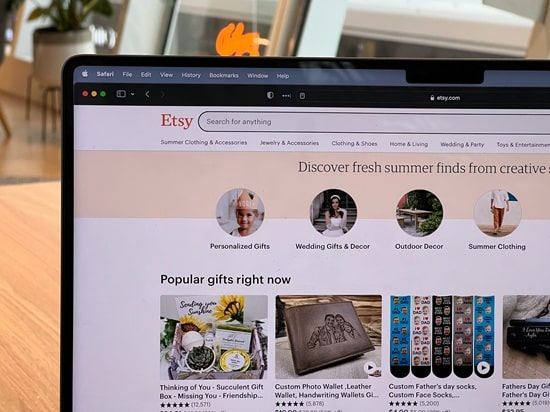
Etsy remains one of the most popular places to sell art online. It’s ideal for handmade pieces, prints, POD (print-on-demand) items, and digital downloads such as planners and templates. With millions of monthly visitors, Etsy gives artists instant exposure to a large, global audience.
The platform charges small listing and transaction fees, but its search traffic often makes up for the costs. For beginners, it’s one of the best ways to sell art online quickly – though competition is high. So strong product photos and SEO-friendly descriptions are essential.
Related: Etsy Payment Processing: Complete Seller Guide to Payouts and Fees
#2 eBay
While not art-specific, eBay can be a powerful tool for selling your artwork, especially if you already create collectibles or unique originals. Its auction system allows you to test demand and set flexible pricing.
eBay offers global reach and secure payments, but requires you to handle shipping and presentation carefully. It works best for one-of-a-kind pieces, rare items, or experimental sales alongside other platforms.
#3 Amazon Handmade
Amazon Handmade is a curated section of Amazon dedicated to artisan products, including art. It gives artists access to one of the world’s largest eCommerce audiences. There are no listing fees, but commissions are higher than on Etsy.
The upside is trust: buyers feel secure purchasing through Amazon. If you want mass exposure and are willing to navigate stricter requirements, Amazon Handmade can be a great option.
Read next: Easy Beginner-Friendly e-Commerce Platforms for Side Hustle in 2025
Best Platforms to Sell Art Online: Print-on-Demand Platforms
#4 Society6
Society6 is a favorite among artists who want to sell prints online without handling production or shipping. You upload your designs, and Society6 prints them on art prints, home décor, apparel, and more. You earn a margin on top of base production costs.
It’s easy to start and great for reaching trend-focused buyers, though profit margins can be slim. For passive income, Society6 is a strong choice.
Related: How to Start a Profitable Print-on-Demand Clothing Brand on a Budget
#5 Printful
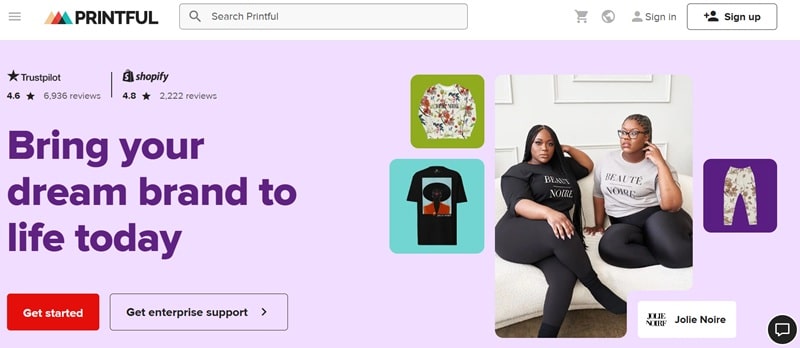
Printful is one of the leading print-on-demand providers for artists and designers. It lets you sell prints, posters, apparel, and home décor without managing inventory.
Unlike marketplaces like Society6, Printful doesn’t bring its own audience – you’ll need to connect it to your online store (such as Shopify, WooCommerce, or Ecwid) or a marketplace like Etsy or eBay. The upside is complete control over branding and pricing.
Printful handles printing, packaging, and shipping under your name and logo, making it feel like your own store. You can even send personalized notes on your packages! For artists ready to take a professional step, Printful is one of the best ways to sell art online.
#6 Printify
Printify works similarly to Printful, offering a wide range of print-on-demand products like art prints, wall canvases, and merchandise. You integrate it with your store on Shopify, WooCommerce, or Ecwid – or sell through Etsy and eBay.
Printify’s advantage is its global network of print providers, which helps lower shipping costs and delivery times. You keep control over design and margins, while Printify handles fulfillment. For artists who want flexibility and scalability, Printify is a smart choice.
#7 Contrado
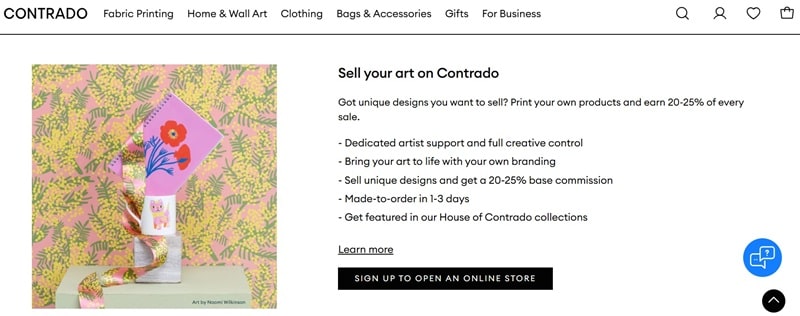
Contrado is a print-on-demand platform based in the UK that focuses on premium, customizable products. Artists can sell prints, clothing, stationery, and lifestyle items featuring their designs, often with higher quality and price points than mass-market POD sites.
Contrado markets itself as more exclusive, appealing to shoppers who want unique, well-crafted pieces. While it may have a smaller audience than Redbubble or Society6, its emphasis on quality makes it a strong option for artists who want their work aligned with a more upscale brand.
#8 Redbubble
Similar to Society6, Redbubble focuses on print-on-demand art. It supports a wide range of products like stickers, apparel, and wall art. Redbubble’s marketplace is global, attracting younger buyers and fans of pop culture designs. Artists earn a percentage of each sale, with no upfront costs.
It’s an excellent way to test digital designs and reach a large community, though standing out requires consistent uploads and niche focus.
#9 Zazzle
Zazzle allows artists to sell designs across a huge catalog of customizable products, from stationery to wall art. It’s highly flexible and gives you control over royalties, letting you set your earnings margin. Zazzle attracts both casual shoppers and corporate clients, making it a versatile platform.
However, the wide product variety can be overwhelming, so it’s best for artists who enjoy experimenting with designs across many formats.
Related: Print on Demand Samples: How to Get High Quality Products
Best Platforms to Sell Art Online: Fine Art and Niche Platforms
#10 Saatchi Art
Saatchi Art is a leading platform for selling original fine art. It caters to serious collectors and handles logistics like packaging and shipping, which is a huge benefit for artists.
Saatchi charges a 35% commission, but in return, you gain exposure to an international audience that values original, high-quality work. If your focus is on selling original art online at premium prices, Saatchi Art is one of the top choices.
#11 Artfinder
Artfinder is a curated marketplace dedicated to independent artists. Unlike mass-market platforms, it emphasizes originality and quality. You apply to join, and once approved, you can list paintings, sculptures, prints, and more.
Commission rates vary, but Artfinder’s audience is highly targeted – buyers come specifically for unique, authentic artwork. This makes it ideal if you want to connect with serious art lovers without the noise of mass-produced items.
#12 Fine Art America
Fine Art America offers both print-on-demand services and a platform for selling originals. Artists can sell wall art, prints, and merchandise, while also tapping into licensing opportunities. It’s versatile and well-suited for artists who want to diversify their income streams.
With a built-in community and marketing tools, Fine Art America gives you a balanced mix of exposure and flexibility.
Best Platforms to Sell Art Online: Self-Hosted Stores and eCommerce
#13 Shopify
Shopify is one of the most popular platforms for artists who want a branded online store. It’s user-friendly, customizable, and integrates seamlessly with print-on-demand services like Printful and Printify. Shopify allows you to control your branding, pricing, and customer relationships, unlike marketplaces where competition is side-by-side.
The main drawbacks are monthly fees and the need to drive your own traffic through marketing and SEO. For artists serious about turning their art into a long-term business, Shopify is one of the best platforms to sell art online.
#14 WooCommerce
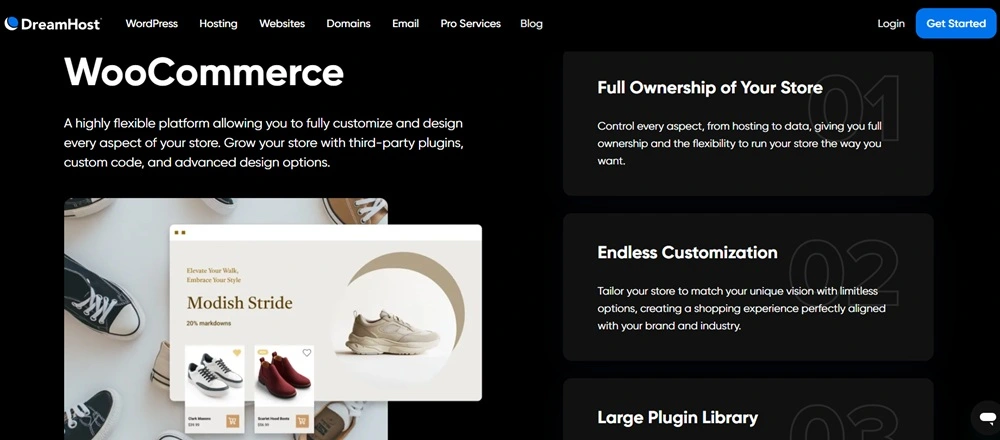
WooCommerce is a free WordPress plugin that turns your website into a full-featured art store. It’s perfect for artists who want total control over design, pricing, and branding. You’ll need hosting and some setup, but the payoff is independence – you set your rules and keep your profits.
With extensions for payments, shipping, and print-on-demand, WooCommerce is one of the best ways to sell your artwork online without relying on third parties.
#15 Squarespace
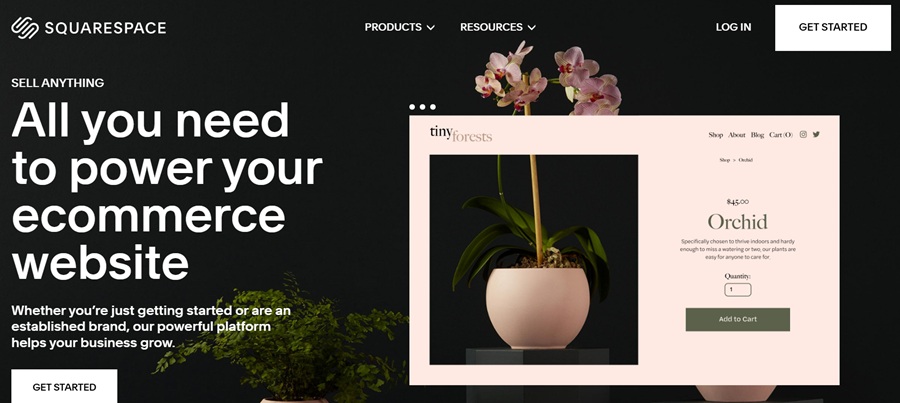
Squarespace is a website builder known for its stunning design templates. It’s perfect for artists who want to showcase their portfolios and sell their work in a polished, professional way.
The platform includes eCommerce tools like payment processing, inventory management, and print-on-demand integrations. Squarespace charges a monthly fee but is beginner-friendly and requires no technical knowledge.
For artists who prioritize aesthetics and want an easy drag-and-drop solution, Squarespace is a great choice.
#16 Ecwid
Ecwid is another great option for self-hosted selling. It integrates seamlessly into your existing website or social media, letting you add a professional store without starting from scratch.
Ecwid handles payments, product listings, and even multi-channel selling across platforms like Instagram and Facebook. It’s affordable, easy to use, and scalable, making it ideal for artists who want to grow at their own pace.
Best Platforms to Sell Art Online: Social Networks
#17 Instagram Shopping
Instagram has become more than a place to share art – it’s a storefront. With Instagram Shopping, you can tag products directly in your posts and stories, making it easy for followers to buy. It’s especially effective if you already engage with your audience visually.
The key is consistency: post regularly, use relevant hashtags, and connect with your community. Sales happen organically when you build trust and visibility.
#18 Facebook Marketplace
Facebook Marketplace is simple but effective for selling artwork locally. It’s free to list, and buyers can connect with you directly. While it doesn’t offer the same global reach as other platforms, it’s a great way to start selling without fees.
For larger exposure, you can also link Marketplace listings with Facebook Shops to create a more professional store presence.
Best Platforms to Sell Art Online: Comparison Table
Editor’s note: If you have any trouble viewing the table on your mobile device, please try rotating your screen! 👍🏻😉
| Platform | Best For | Fees | Audience |
|---|---|---|---|
| Etsy | Handmade & original art | Listing + transaction fees | Large, global |
| eBay | Auctions & collectibles | Listing + final value fee | Global shoppers |
| Amazon Handmade | Handmade artisan products | 15% commission | Mass-market buyers |
| Society6 | Print-on-demand art | Base cost + margin | Trendy buyers |
| Redbubble | Print-on-demand designs | Base cost + margin | Youth & niche fans |
| Zazzle | Customizable products | Base cost + royalties | Wide consumer market |
| Printful | POD via store/marketplace | Base cost + margin | Your store’s audience |
| Printify | POD via store/marketplace | Base cost + margin | Your store’s audience |
| Contrado | Premium POD products | Base cost + margin | Quality-focused buyers |
| Saatchi Art | Fine art originals | 35% commission | Collectors |
| Artfinder | Independent artists | 30–40% commission | Art enthusiasts |
| Fine Art America | Prints & originals | Membership + margin | Mixed audience |
| Shopify | Branded online store | Monthly fee + apps | Your own audience |
| WooCommerce | Self-hosted WordPress stores | Hosting + plugins | Your own audience |
| Squarespace | Stylish portfolio + shop | Monthly fee | Your own audience |
| Ecwid | Website & social integration | Free + premium plans | Your own audience |
| Instagram Shopping | Direct social sales | Free (ads optional) | Followers & fans |
| Facebook Marketplace | Local art sales | Free | Local buyers |
Tips to Maximize Your Art Sales Online
Selling art online successfully is about more than just uploading images. To boost sales, you need to focus on pricing, photography, SEO, and audience building.
Pricing your art
Pricing your art is critical. Research similar artworks on your platform to find a competitive range. Consider your time, materials, and brand positioning. Offering multiple formats – originals, limited editions, or prints – can cater to different buyer budgets.
High-quality photos
High-quality photos make a huge difference. Use natural light, neutral backgrounds, and multiple angles to showcase textures and details. Include close-ups and scale references so buyers understand the piece fully.
SEO for art listings
SEO for art listings ensures your work gets discovered. Use relevant keywords in titles, descriptions, and tags, such as “sell original art online” or “buy abstract paintings.” Adding LSI keywords like “art selling websites” or “places to sell art” can help your listings rank on search engines and marketplace searches.
Building an audience
Building an audience is essential for long-term success. Share your creative process on social media, start an email newsletter, and engage with followers through stories or live sessions. Platforms like Instagram, Facebook, and Pinterest can drive traffic to your shop.
Monitor your results
Finally, monitor your results. Track which listings convert, what traffic sources work best, and adjust accordingly. Combining strategic pricing, professional visuals, SEO, and community-building will help you sell your artwork online more effectively and turn casual browsers into loyal collectors.
Art Sales Tips Cheat Sheet Table
Editor’s note: If you have any trouble viewing the table on your mobile device, please try rotating your screen!
| Tip | Action |
|---|---|
| Pricing | Research competitors, account for time and materials, offer prints & originals for different budgets |
| Photography | Use natural light, neutral backgrounds, multiple angles, and scale references |
| SEO | Include main keywords, LSI keywords, and descriptive titles & tags for better discoverability |
| Audience Building | Share your process, engage on social media, and start an email newsletter to nurture collectors |
| Monitor & Adjust | Track conversions, test listing formats, and adjust pricing or marketing strategies accordingly |
Which App Pays Artists The Most?
When it comes to earning the most from your art, self-hosted stores and certain marketplaces stand out. Platforms like Shopify or WooCommerce let you set your own prices and keep nearly all profits, with only hosting or transaction fees.
Among marketplaces, Saatchi Art and Artfinder pay generous artist commissions (around 60–70% after fees), making them more profitable than high-traffic POD sites like Society6 or Redbubble, where margins are fixed.
For print-on-demand, using apps like Printful or Printify with your own store maximizes earnings since you control pricing.
Choosing platforms that let you own your sales and set your own margins is key to making the most money as an artist.
How to Make Money Selling Art Online
The first step is diversifying your income.
Don’t rely solely on selling originals. Offer prints, digital downloads, and even commissions. Choose more than one of the best platforms to sell art online, and also check for the best websites for art commissions, so you maximize your chances of earning, no matter what buyers prefer.
Another way to increase profits is to choose the best platforms to sell art online based on your niche. For example, Saatchi Art is great for high-value originals, while Society6 works better if you want to sell designs on home décor or apparel. If you want full control over pricing and branding, build your own store with WooCommerce or Ecwid.
Marketing is also key. Promote your listings on social media, build a mailing list, and engage with potential buyers. The more people see your work, the higher your chances of making sales.
Finally, treat your art like a business. Keep track of expenses, price fairly, and reinvest part of your profits into better materials, advertising, or even improving your online store. The best way to sell artwork online – and make real money – is to combine creativity with smart business practices.
Read next: How to Monetize Your Skills, Knowledge & Talents Online
What Type of Art Sells Fast? (and What Size Sells Best)

One of the biggest questions artists ask before selling online is: “what type of art sells fast?” While trends shift over time, some categories consistently attract buyers.
Prints are among the most popular because they’re affordable, easy to ship, and allow collectors to enjoy your work without committing to expensive originals or costly frames.
Digital art is also on the rise, especially with the growth of online downloads for wall art, planners, and even social media templates.
When it comes to style, abstract art and minimalist pieces often sell quickly because they fit into modern homes and appeal to a wide range of buyers.
Photography, illustrations, and personalized art (like custom portraits or pet art) are also in demand.
The best way to sell art online is to balance timeless styles with trending themes so your work appeals to both long-term collectors and impulse buyers.
Size also plays an important role in how quickly your art sells.
Smaller works (such as 8×10 or 11×14 prints) are popular because they’re affordable, fit into standard frames, and are easier to ship internationally. Medium-sized canvases (16×20 or 18×24) tend to do well with home decorators who want a statement piece without the cost of large-scale art. While oversized art can be profitable, it typically takes longer to sell due to higher prices and shipping challenges.
In short, if you want faster sales, focus on accessible sizes and versatile art styles that fit seamlessly into everyday spaces.
What Type of Art Is in Demand Right Now?

Art trends shift quickly, but knowing what buyers want right now can help you position your work to sell faster.
In 2025, there’s a growing demand for art that feels personal, sustainable, and versatile. Buyers are looking for pieces that not only decorate their homes but also reflect their values and lifestyles.
Abstract and minimalist designs
Abstract and minimalist designs remain top sellers because they complement modern interiors. Bold, colorful abstract pieces are especially popular with younger audiences, while softer neutral palettes appeal to those seeking a calming atmosphere. Nature-inspired art, such as landscapes, botanical prints, and ocean scenes, continues to resonate with buyers who want to bring the outdoors inside.
Digital art
Digital art is also in demand, particularly wall prints that customers can download and print at home. This option is affordable, eco-friendly, and gives instant gratification – something modern shoppers love. On platforms like Etsy and Creative Market, digital planners, calendars, and graphic elements are trending categories that allow artists to diversify their income.
Custom art
Another big movement is personalized art. Custom portraits, family illustrations, and pet artwork are highly sought after because they add emotional value that mass-produced items can’t match. These often command higher prices and lead to repeat customers.
If you’re aiming to sell artwork online successfully, keep an eye on these trends but also stay true to your style. The best platforms to sell art online in 2025 make it easy to test new ideas, adapt quickly, and meet the current demand while building your own signature brand.
Best Platforms to Sell Art Online: Best Websites to Sell Art On for Free
Starting your art or creative business doesn’t always require a big budget. If you’re looking for the best websites to sell art online for free, several platforms allow you to list and sell without upfront costs. This is especially helpful for beginners who want to test the waters before investing in a full eCommerce setup.
Etsy
Etsy is one of the most popular options. While it charges listing and transaction fees, there’s no monthly subscription, which makes it accessible for new artists.
Social Media
Facebook Marketplace is completely free to use and ideal for selling locally, especially if you want to build a customer base without shipping hassles. Instagram Shopping also gives artists the chance to showcase and sell directly through posts and stories, with no listing fees.
Ecwid
If you prefer a self-hosted option, Ecwid’s free plan lets you set up a small online store that integrates into your website or social media. This is a great way to keep costs low while maintaining control over your brand.
The trade-off with free platforms is that they often come with limited tools, smaller exposure, or higher commissions per sale. Still, they’re excellent starting points to sell your artwork online without taking financial risks. Over time, you can upgrade to premium features or move to more robust platforms once sales grow.
Best Platforms to Sell Art Online: Best Website to Sell Art Prints
Selling art prints online is a great way to reach a wider audience without worrying about original artwork inventory. Many platforms specialize in print-on-demand services or art marketplaces, making it easy for artists to offer prints in multiple sizes and formats. Here are some of the top options to sell prints online:
- Society6 – Offers a variety of print formats and handles printing, shipping, and customer service. Perfect for trendy and decorative prints.
- Redbubble – Print-on-demand platform with a global audience. Ideal for selling posters, canvases, and merchandise featuring your art.
- Fine Art America – Supports high-quality prints, framing options, and international shipping. Great for traditional art prints and photography.
- Printful – Connects to your own store (Shopify, WooCommerce, Ecwid) or marketplaces like Etsy/eBay. Lets you sell prints on demand with full branding control.
- Printify – Similar to Printful, it connects to your online store or marketplace and offers a large network of global print providers to reduce shipping costs.
- Contrado – Premium print-on-demand service with high-quality print materials and customizable products, catering to more upscale buyers.
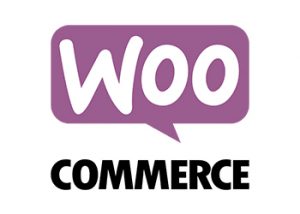
Launch Your Online Store with WooCommerce
Build your store with WooCommerce, the #1 eCommerce plugin for WordPress. Free to start (you only pay for hosting), scalable with extensions, and perfect for selling physical or digital products directly from home.
Get Started with WooCommerceThese platforms make it easy to start selling prints without upfront costs for inventory, letting you focus on creating art while they handle fulfillment.
Best Platforms to Sell Art Online: How to Sell Art for the First Time

Taking the first step to sell your artwork online can feel overwhelming, but it doesn’t have to be. The key is to start small, stay consistent, and use platforms that make the process simple. If you’re new, think of this as building both your shop and your brand.
Begin by choosing a platform that fits your goals. For example:
Platform
If you want exposure and don’t mind competing with other artists, marketplaces like Etsy or Society6 are great starting points. If you’d rather have full control, a self-hosted store with WooCommerce or Ecwid gives you independence to brand yourself and grow without platform fees.
Product listings
Once you’ve picked where to sell, focus on creating strong product listings. Use clear, high-quality photos of your art, write descriptions that highlight the story behind each piece, and include details like size, materials, and shipping info. Buyers connect not just with your work but also with the narrative you share.
Pricing
Pricing is another step that first-time sellers often struggle with. Research what similar artists are charging, but don’t undervalue your effort. Factor in materials, time, and platform fees to set a fair price. I have covered commission pricing mistakes in another article, so you have a lot of in-depth content to read already!
Promote
Lastly, promote your art. Share your listings on social media, build an email list, and engage with your audience regularly. Selling art online isn’t just about posting – it’s about connecting. The best way to sell art online for beginners is to combine visibility with authenticity, giving people a reason to invest in your creativity.
How Do You Know Your Art Is Good Enough to Sell?
One of the biggest doubts new artists face is wondering whether their work is “good enough” to sell. The truth is, you don’t need a gallery to validate your art. If people connect with your work, there’s a market for it. Selling art online is about finding the right audience rather than meeting a universal standard.
Start by testing demand. Share your artwork on social media or in creative communities like Instagram, DeviantArt, or Facebook groups. Pay attention to which pieces get the most likes, shares, and comments. If certain styles or subjects consistently get positive feedback, that’s a strong indicator that buyers may be interested.

Another way to gauge readiness is by listing a few pieces on art-selling websites. Many platforms make it easy to upload your work for free, so you can test the waters without major investment. Sometimes, you’ll be surprised at which artworks resonate most with buyers.
Remember, technical perfection isn’t always what sells. People often buy art because it evokes a sense of emotion, complements their home décor, or reflects their personality. Your unique style is your biggest selling point.
If you’re serious about selling your artwork online, focus less on asking “Am I good enough?” and more on learning “Where is my audience?” With the best platforms to sell art online, even beginners can start building confidence, making sales, and improving over time.
Sell Paintings Online
Selling paintings online gives you access to a global audience. Platforms like Etsy, Saatchi Art, and Artfinder are ideal for originals, while print-on-demand services allow selling reproductions. Make sure your listings include high-quality images, clear dimensions, and pricing tiers for different buyers. Social media can also drive traffic to your shop. Highlight the story behind each piece to connect with potential buyers, and optimize listings with keywords such as “sell original art online” or “best platforms to sell art online” to increase visibility.
Sell Your Drawings Online
Drawings, whether sketches, digital art, or ink works, are highly versatile for online sales. You can sell originals, prints, or digital downloads. Platforms like Etsy, Redbubble, and your self-hosted store are perfect for this. Optimize your listings with keywords, include clear photos or scans, and provide context or inspiration behind each piece. Offering limited editions or bundles can boost appeal, while social media helps grow an audience of buyers specifically interested in drawings.
What Kind of Art Sells Best on Etsy?
Etsy buyers typically look for handmade, original, or unique art. Popular categories include prints, watercolor pieces, abstract paintings, and digital downloads. Buyers value personal stories and authenticity, so well-crafted descriptions and professional photos matter. Listing items in multiple sizes and offering print versions increases accessibility. Using Etsy-specific SEO keywords helps your shop rank higher in searches. Engaging with the Etsy community through reviews and promotions can also drive more consistent sales.
Which eCommerce Platform Is Best for Artists?
The best eCommerce platform depends on your goals. Shopify is ideal for fully branded stores with print-on-demand integration. WooCommerce offers full customization for WordPress users, while Squarespace provides visually stunning portfolios with integrated sales tools. Ecwid is great for adding a store to an existing site or social channels. Self-hosted platforms give you control over pricing, branding, and customer relationships, while marketplaces offer exposure. Consider your technical comfort level, budget, and desired level of control when choosing the best platform for selling art online.
Best Platforms to Sell Art Online in 2025: Conclusion
The best platforms to sell art online give every artist a chance to share and profit from their work. Whether through marketplaces, print-on-demand, or a self-hosted store, the key is to take action. Start small, showcase your art, and connect with your audience. Every listing is a step toward building your art business – launch your first piece today and let your creativity reach the world.

Launch Your Online Store with WooCommerce
Build your store with WooCommerce, the #1 eCommerce plugin for WordPress. Free to start (you only pay for hosting), scalable with extensions, and perfect for selling physical or digital products directly from home.
Get Started with WooCommerceBest Platforms to Sell Art Online: FAQ
What platform do most artists use?
Many artists use platforms like Etsy, Instagram, and Saatchi Art to sell their work. Etsy is popular for handmade and original pieces, Instagram helps artists grow a following and drive sales, and Saatchi Art attracts collectors looking for fine art. Combining these platforms often gives artists maximum exposure and sales opportunities.
What is the most profitable way to sell art?
The most profitable way to sell art is through self-hosted stores like Shopify or WooCommerce. These platforms let you set your own prices and keep nearly all profits. Selling originals or limited edition prints can also increase earnings. Combining this with targeted marketing and social media promotion maximizes visibility and revenue for artists.
What is the best platform for artists to make money?
Platforms like Shopify, WooCommerce, and Saatchi Art are among the best for making money. Shopify and WooCommerce give artists full control of pricing and branding, while Saatchi Art offers access to collectors willing to pay higher prices for originals. Choosing a platform depends on your business goals and desired balance between exposure and profit.
Where is it best to sell your art?
The best place to sell art depends on your audience and type of work. Etsy and eBay are great for handmade and small pieces, Saatchi Art and Artfinder suit fine art, and print-on-demand sites like Society6 are perfect for prints. Combining multiple platforms can help artists reach wider audiences and increase sales.
What platform sells the most art?
Etsy is one of the platforms that sells the most art due to its large, engaged audience and reputation for handmade and original items. Instagram can also drive significant sales when used strategically to build a following and link to your shop. Combining a marketplace with a self-hosted store often maximizes total sales.
What kind of art is the most sold?
Prints, illustrations, and small to medium-sized original pieces tend to sell the most online. Digital downloads and trendy designs also perform well on print-on-demand sites. Buyers are drawn to unique, high-quality, and accessible art that fits their home or personal style, making these categories consistently popular across marketplaces.
Where can I sell art for money?
You can sell art for money on marketplaces like Etsy, eBay, and Saatchi Art, or via self-hosted stores using Shopify or WooCommerce. Print-on-demand platforms such as Society6 and Redbubble allow selling reproductions for profit. The key is choosing platforms that match your audience and type of art to maximize exposure and earnings.
What is the best app to sell art?
The best app depends on your goals. Etsy and Saatchi Art are excellent for originals and prints, Shopify and WooCommerce for full control over sales, and print-on-demand apps like Printful allow selling without inventory. Choose an app that fits your workflow, audience, and desired profit margin.
What is the highest paying art form?
Original fine art, especially paintings and limited edition prints, tend to pay the highest. Digital downloads and print-on-demand products earn less per item but can scale with volume. Selling through self-hosted stores or high-end marketplaces helps maximize income per piece while reaching serious buyers willing to pay premium prices.
What piece of art sold for the most money?
The most expensive artwork sold is Leonardo da Vinci’s “Salvator Mundi,” which sold for over $450 million. High-value sales are typically from fine art collectors and auctions. While most online artists won’t reach this level, understanding the market and positioning your art can help you maximize earnings and appeal to serious buyers.
What is the best app to post art on?
Instagram is currently the top app for posting and promoting art. Its visual focus, large audience, and e-commerce integrations make it ideal for artists to showcase work, build followers, and drive traffic to sales platforms. Other apps like TikTok and Pinterest also help expand reach and attract potential buyers.






